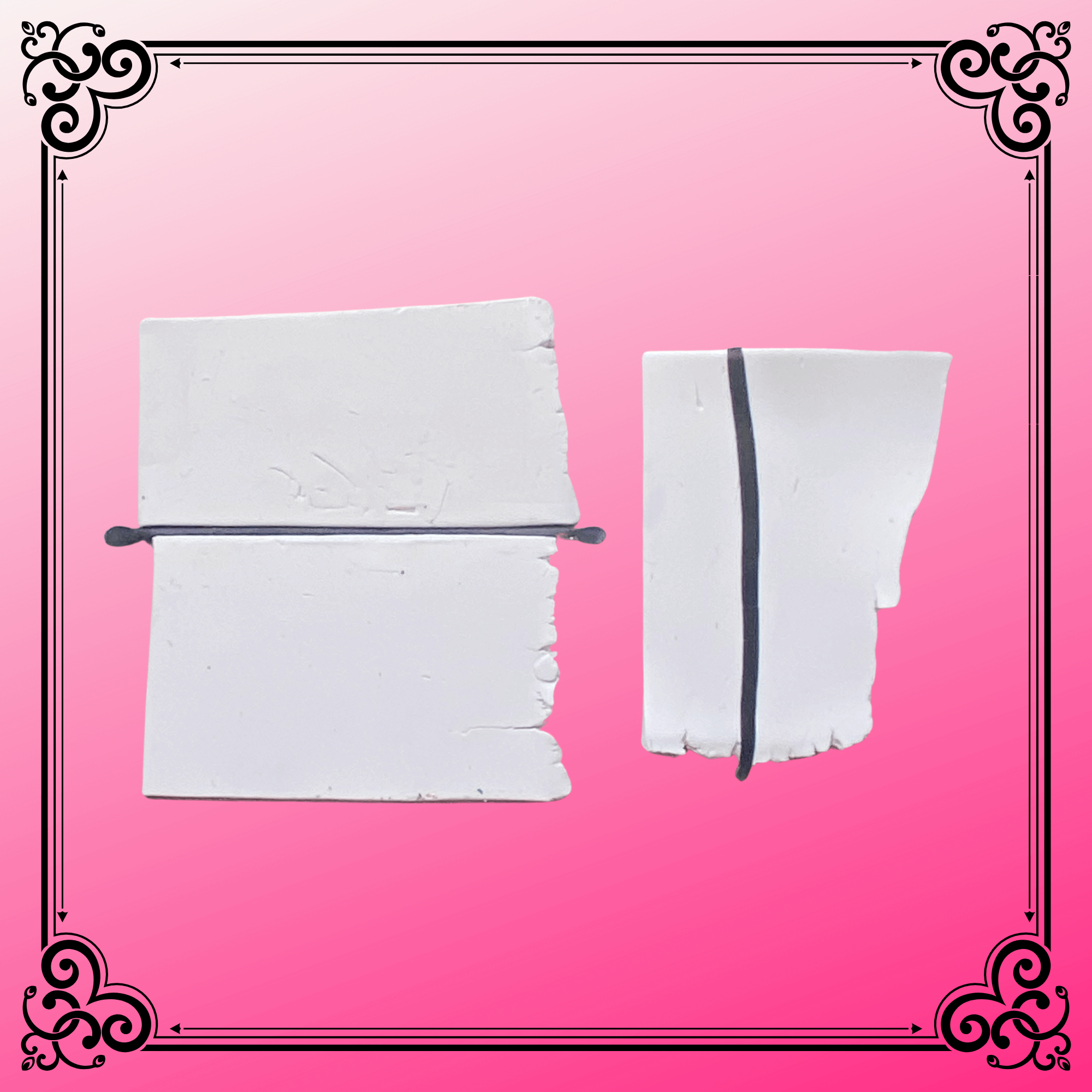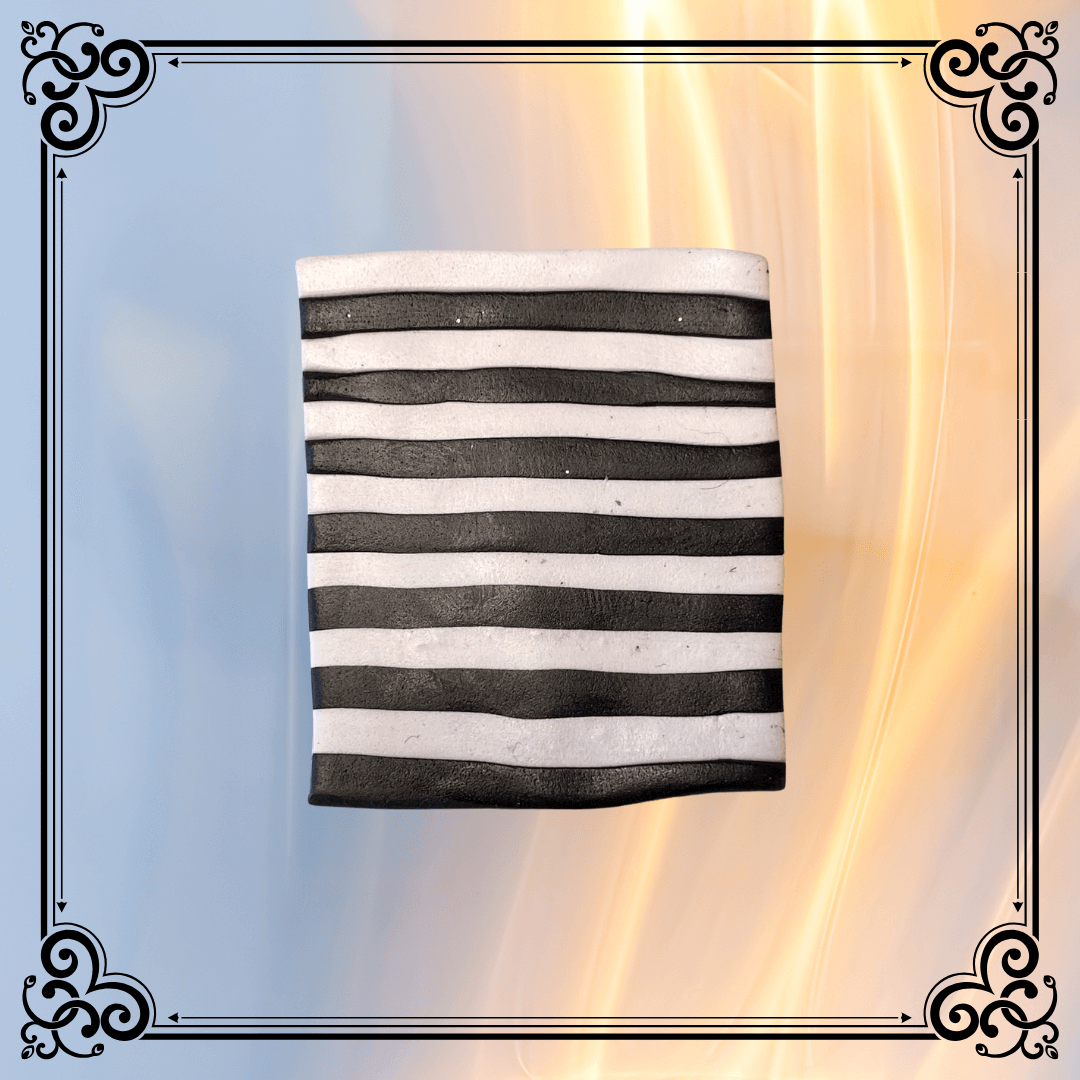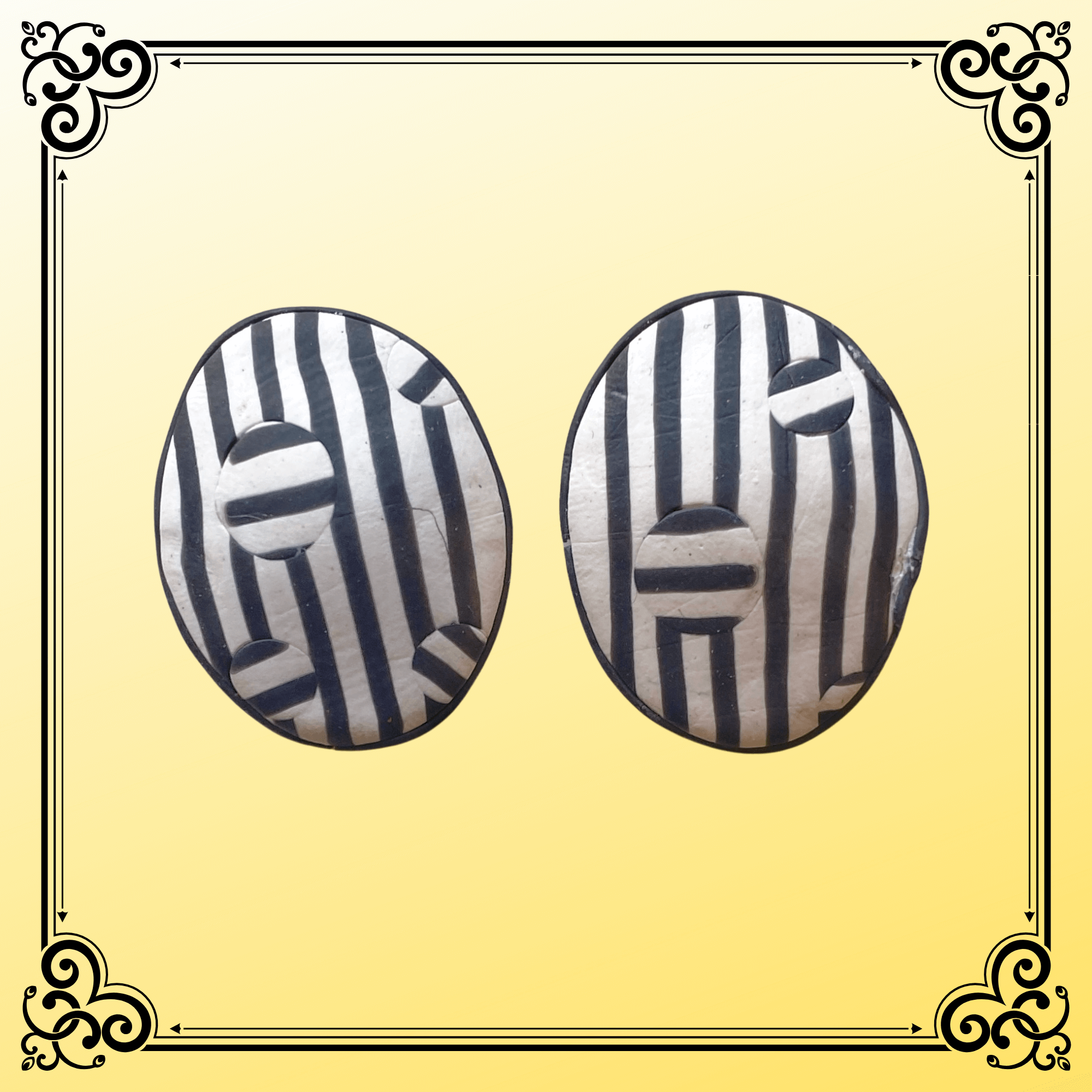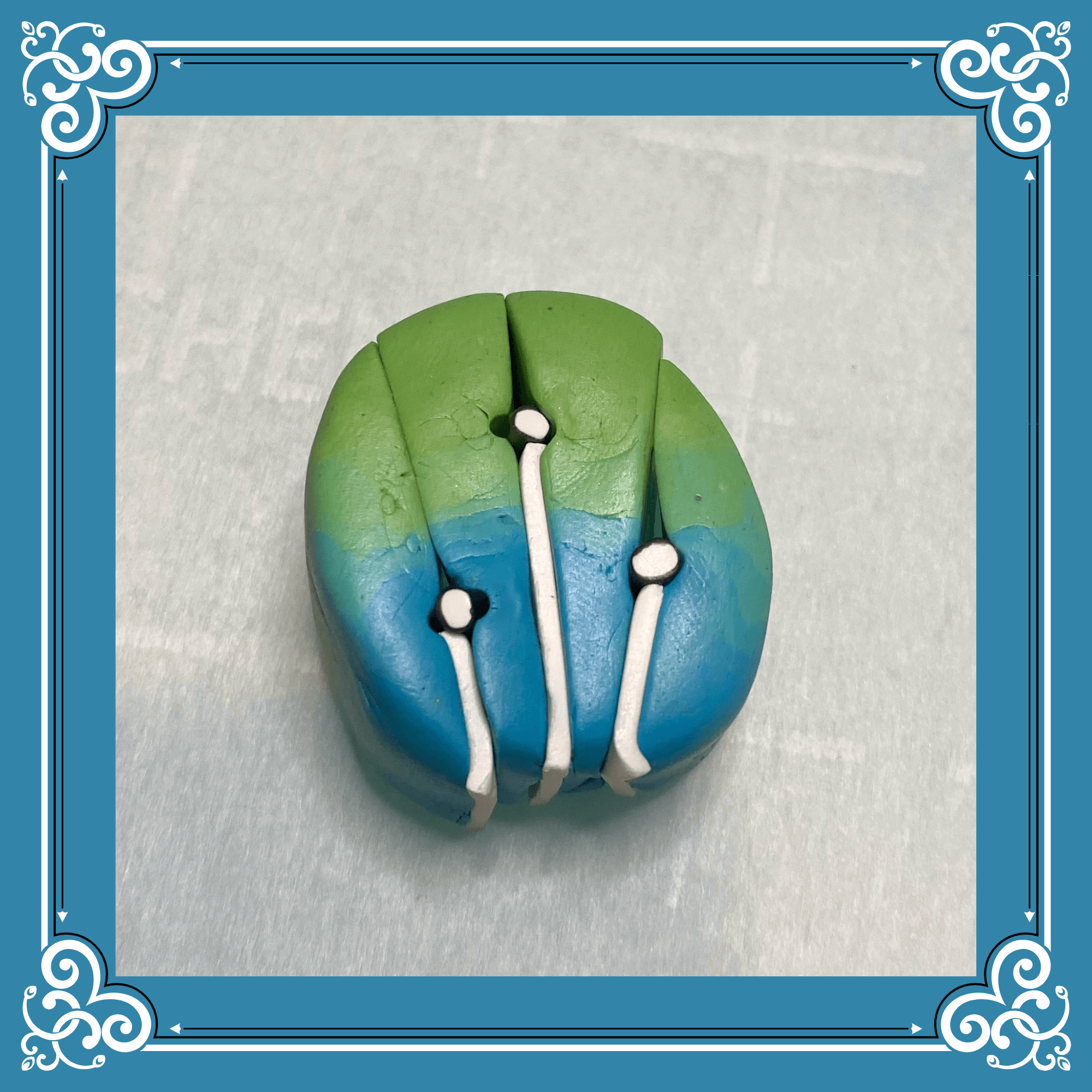"Oh darling, let me tell you about my latest artistic endeavor, where I, in my infinite wisdom, decided to question a polymer clay master's technique. Because naturally, when one discovers Ana Belchi's meticulously crafted polymer clay tutorial, the first logical response is to think, 'Well, that seems unnecessarily complex!'
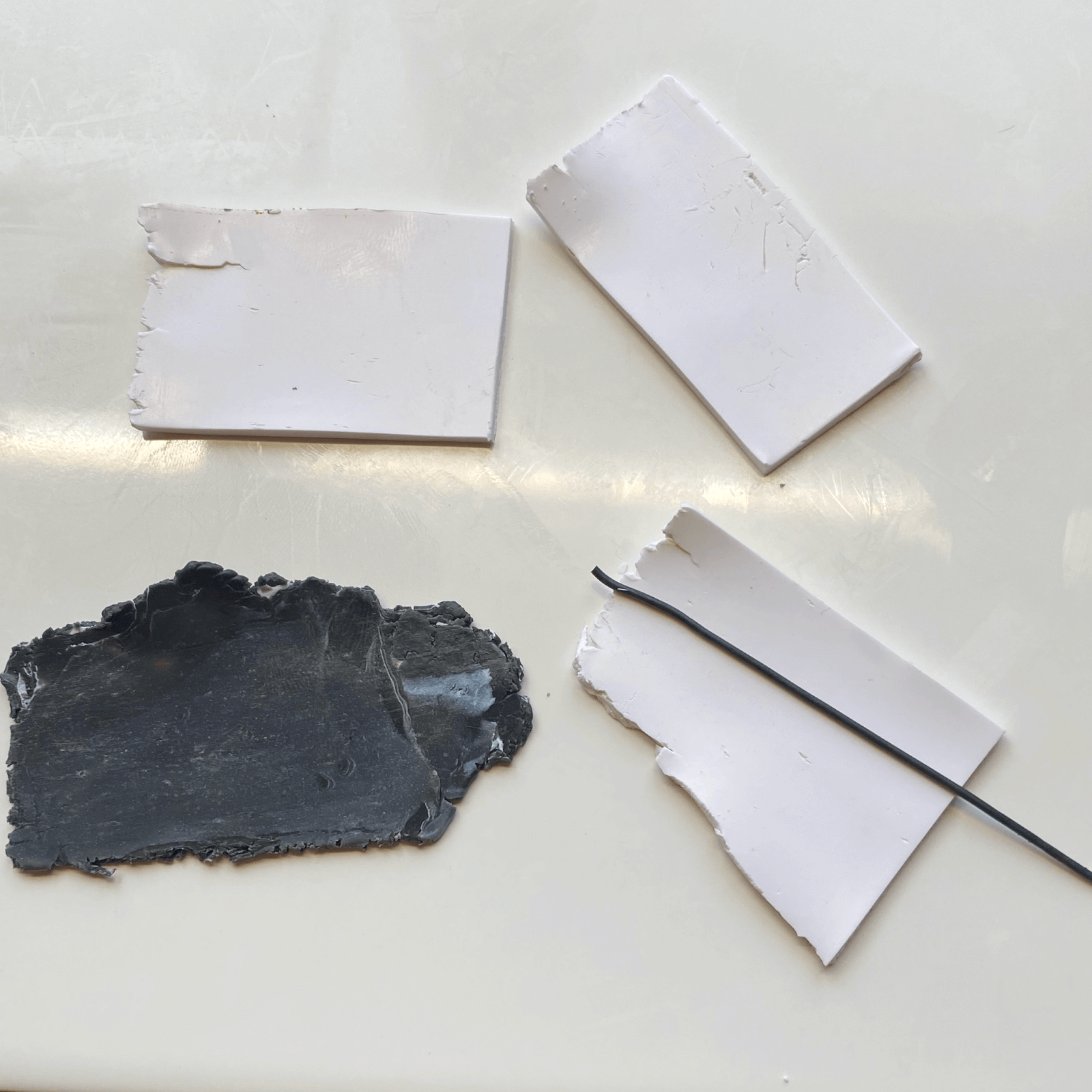
Picture it: There I was, surrounded by slabs of pristine white polymer clay, armed with nothing but confidence and what I was certain was a simpler solution. After all, how difficult could making a thin black line possibly be? Just extrude a delicate string of black clay, lay it down, give it a little pat-pat, and voilà! Right?
Wrong, darling. So very, very wrong.
But let's back up a moment, shall we? Like any good cautionary tale involving artistic hubris, this one deserves a proper telling..."
Like any overconfident chef attempting the finest angel hair pasta, I selected the tiniest opening on my extruder disc. 'This will be perfect,' I assured myself, watching the delicate black strand emerge like a miniature magician's endless rope trick. The resulting thread was so fine, so delicate – surely this would create the elegant line I envisioned!
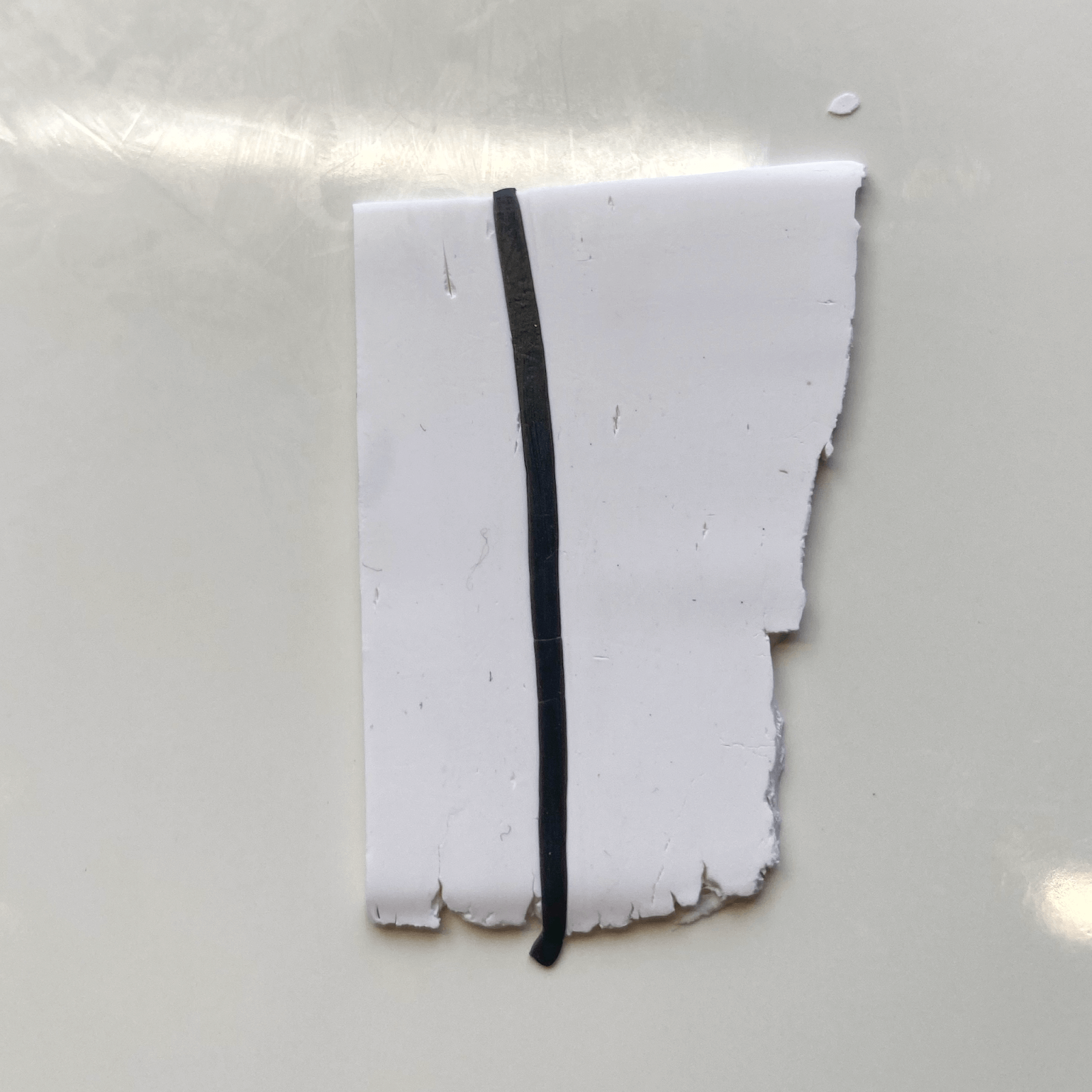
Armed with my clay 'pasta' (and really, darling, that's exactly what it looked like), I approached the pristine white slab with all the confidence of a tightrope walker who hasn't yet looked down. The placement began beautifully – a gentle laying of the line, followed by what I imagined would be a simple burnishing process.
But oh, dear readers, have you ever tried to keep a cooked piece of angel hair pasta perfectly straight? Because that's precisely what this felt like. Despite my best efforts – and I do mean my very best, most delicate, surgeon-worthy movements – that thin black line began to develop a distinctly serpentine personality. What started as an attempt at geometric precision slowly morphed into what one might charitably call 'artistic waves.' Unintentional, unwanted, and utterly unavoidable artistic waves
Having been humbled by my wobbly line experience (and isn't that just how life works, darling?), I decided to give Ana's method the respect it deserved. 'Very well,' I thought, channeling my inner geometry student, 'let's do this properly.'
Out came the pasta machine – and no, my dears, not the one for actual pasta, though at this point the similarities were becoming rather amusing. With mechanical precision, I rolled out two slabs to identical thickness. One white, one black, like a formal dinner dress code made manifest in clay.
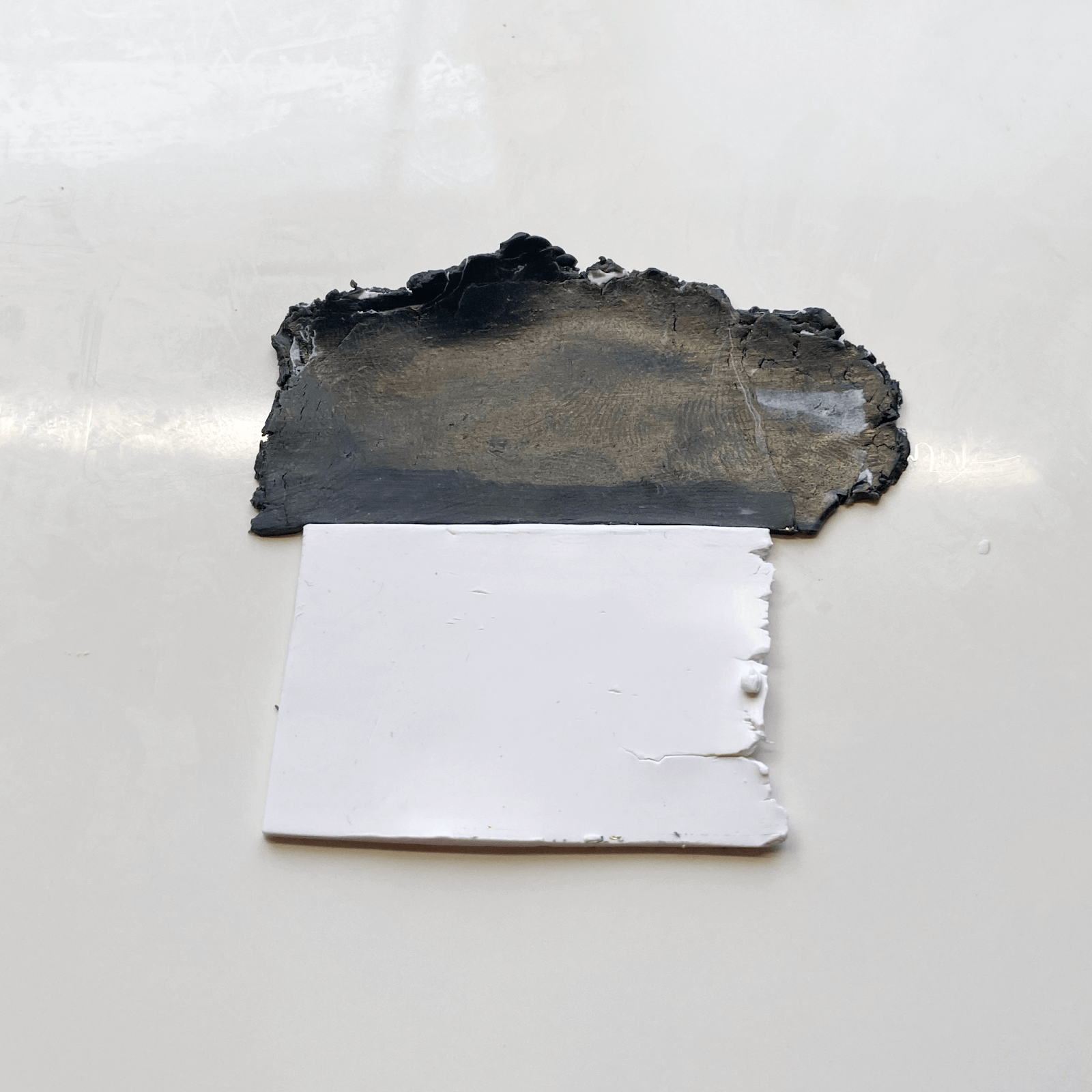
Armed with my rigid blade (and maintaining a rigid respect for the process), I performed what can only be described as clay surgery. The white slab was divided with all the precision of Solomon's judgment, though thankfully with less dramatic consequences. The black slab was trimmed to match with equal care – no pressure, darling, just creating the world's most precise jigsaw puzzle with only two pieces!
The moment of truth arrived as I attempted to unite these contrasting elements. With the delicate touch of someone trying to parallel park a Rolls Royce between two Ferraris, I carefully, oh so carefully, brought the pieces together. A gentle burnish of the join, and...
Now, darlings, if you've ever attempted to slice a piece of black truffle so thin you could read the wine list through it, you'll understand the level of precision required for this next step. There I stood, rigid blade poised above my carefully joined slabs, facing what can only be described as the clay-cutting equivalent of a high-wire act – without a net.
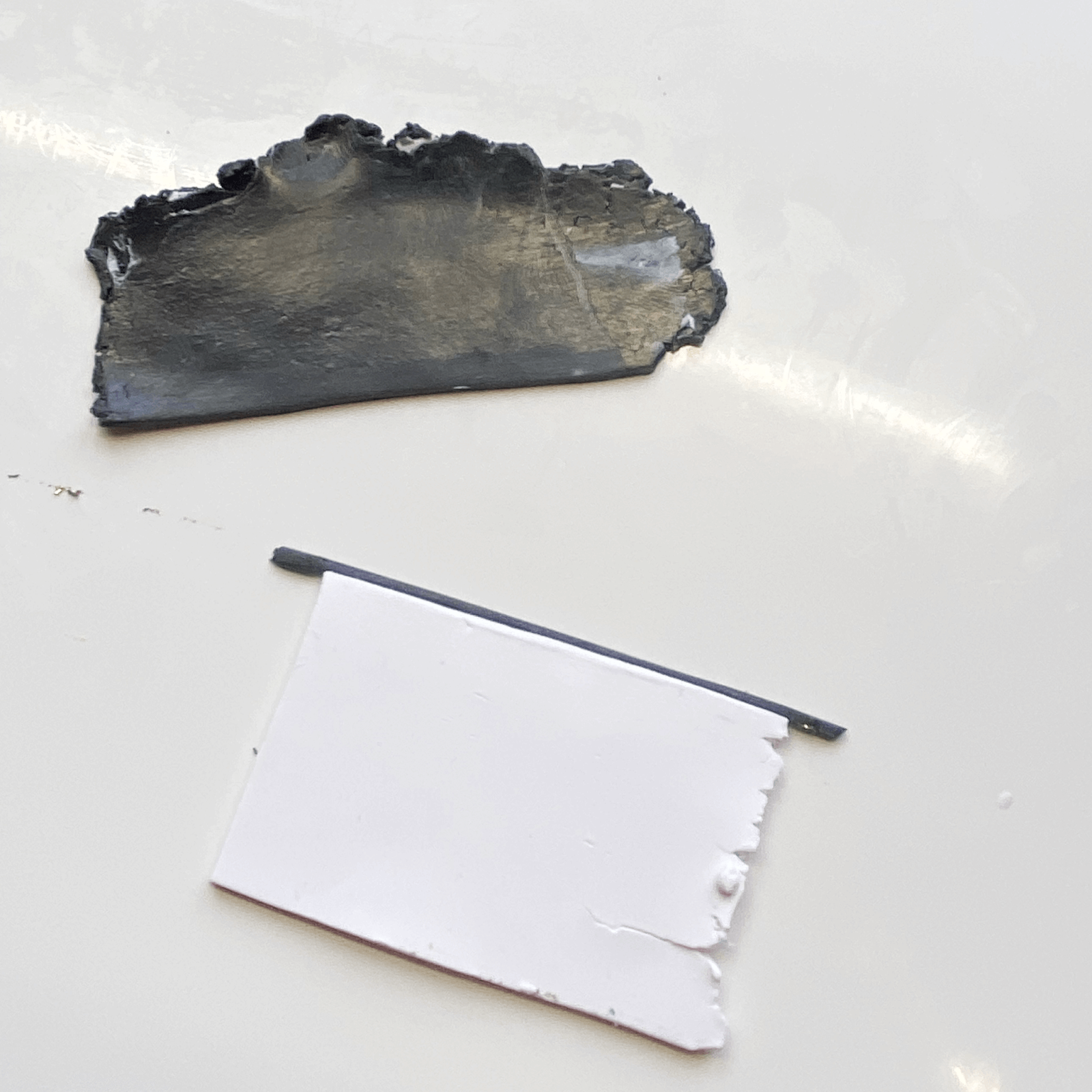
'Too thick,' whispered one shoulder angel, 'and you've missed the whole point of this exercise.' 'Too thin,' warned the other, 'and your line will have more gaps than a socialite's weekend calendar.'
With hands steadier than a brain surgeon after their third espresso, I began the cut. Time seemed to slow – or perhaps that was just me, moving with the careful deliberation of someone defusing a bomb made of polymer clay. The blade glided through, revealing what would either be my triumph or my tragedy...
And there it was, darlings – a black line so precise it would make a geometry teacher weep with joy. Like assembling the world's most minimalist sandwich, I carefully introduced the final white slab to its new neighbors. The resulting trio – white, black, white – sat there looking rather pleased with themselves, like properly arranged place settings at a formal dinner.
With the gentlest touch (think butterfly wings meeting marshmallows), I applied just enough pressure to encourage these elements to form a lasting friendship. Not too much – we're going for 'proper introduction' here, not 'awkward bear hug at a family reunion.' The result was, dare I say it, starting to look remarkably... professional?
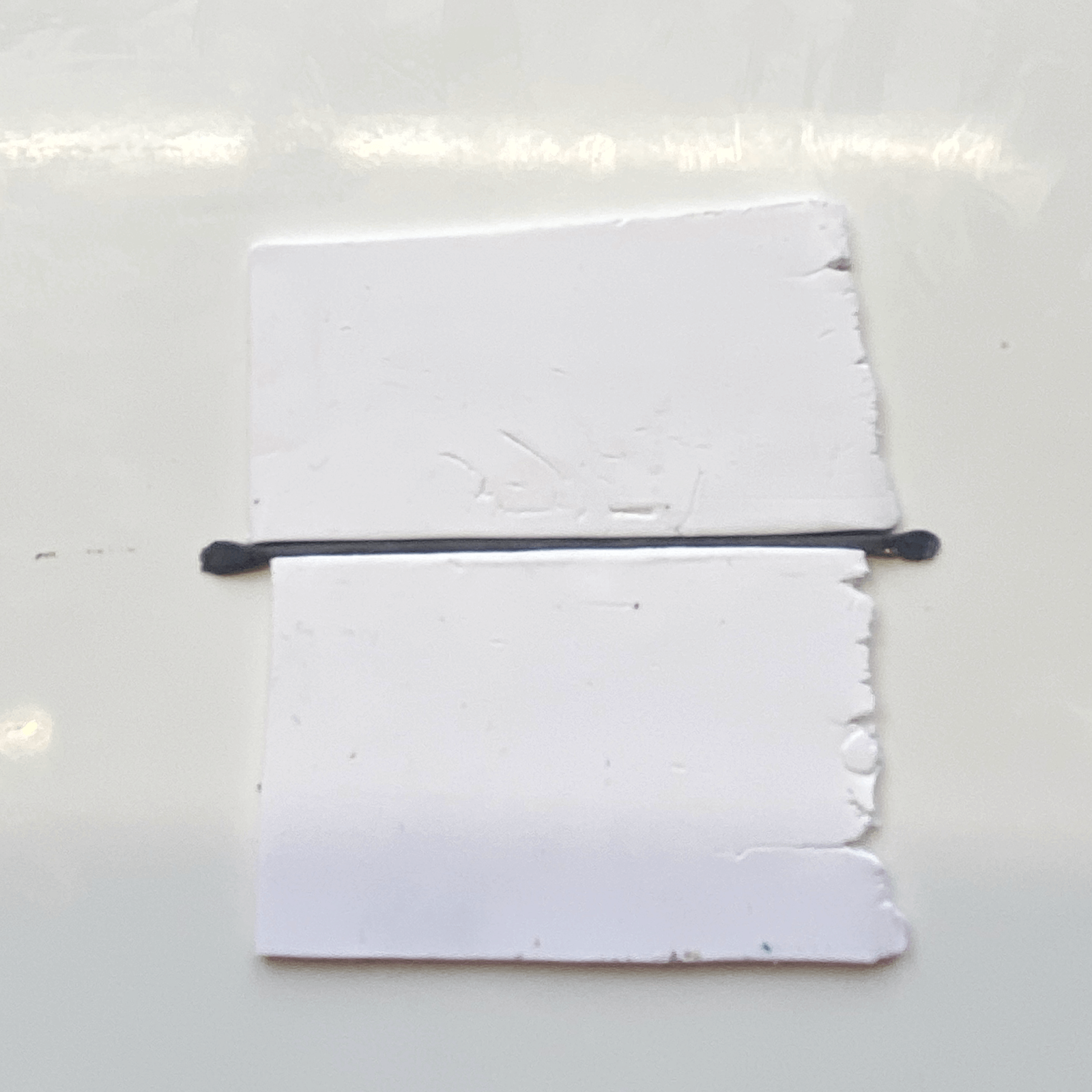
But of course, like any good story of artistic discovery, we're not quite finished. Because what's a crafting adventure without that final moment of truth?
And there you have it, my dears – the grand finale of our thin-line drama, displayed in what can only be described as a 'tale of two techniques.' On the left, Ana Belchi's method produced a line so straight and precise it could have been drawn with a ruler (if rulers worked on clay, which they don't, darling – I checked). On the right... oh, my right-side attempt. Let's just say it has the kind of wobble usually reserved for someone trying to walk in new stilettos on cobblestones.
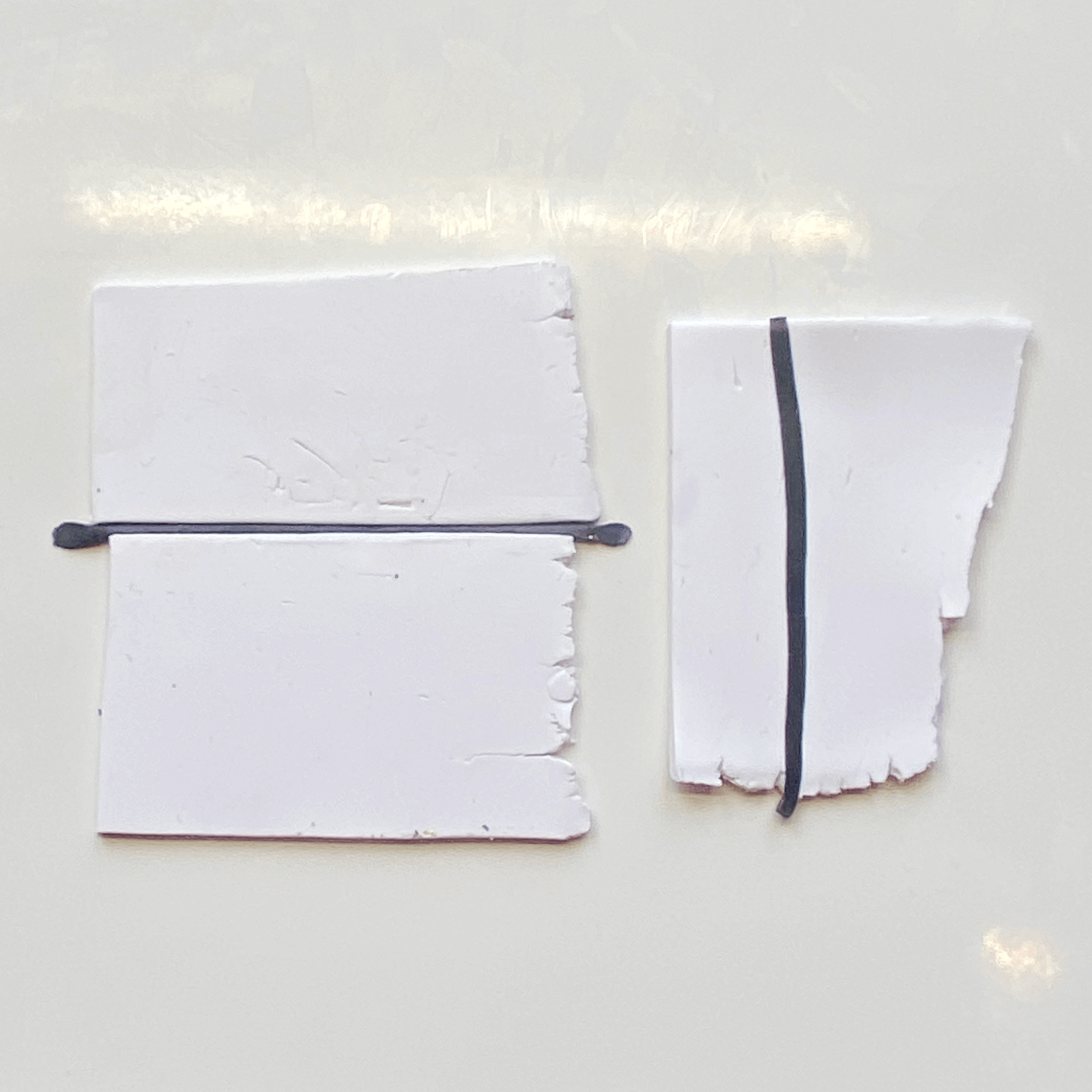
The evidence was as clear as a champagne flute at a wedding toast. My 'simpler' extruded string method had produced a line with more curves than a mountain road and about twice the width I'd intended. Meanwhile, Ana's technique – the one I'd initially dismissed as unnecessarily complex – created exactly what I'd been trying to achieve all along: a whisper-thin line of absolute precision.
Consider me thoroughly humbled, darlings. Sometimes the path of most resistance is exactly the path we need to take. As I sit here, plotting my next attempts (because naturally, I now need to see just how thin I can make these lines), I'm reminded of that old saying: 'Good judgment comes from experience, and experience comes from bad judgment.'
So here's to Ana Belchi, whose wisdom I briefly questioned (mea culpa, darling!), and here's to learning things the hard way – which, let's be honest, is often the most entertaining way to learn anything worth knowing. Now, if you'll excuse me, I have some more clay to slice. This time, I'm aiming for a line so thin it would make a cat's whisker look chunky!

